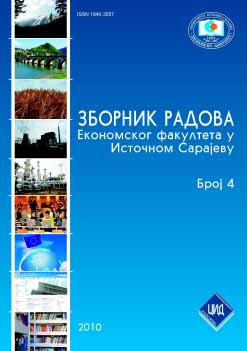Međunarodni monetarni fond - od ideje do savremene prakse
International Monetary Fund - From Idea to Contemporary Practise
Author(s): Marko ĐogoSubject(s): Economy
Published by: Ekonomski fakultet Pale - Univerzitet u Istočnom Sarajevu
Keywords: adaptive fixed exchange rate; Bank of Central Banks; quotas; freedom of choosing the exchange rate; NAB
Summary/Abstract: The IMF was established at the end of World War II, in order to establish a new international monetary system, which is based on one form of fixed exchange rate, the central international monetary institution which in a special way places the foreign currency at the disposal of the Central Banks and the U.S. dollar as a backup currency. Due to some internal weaknesses (Tiffin’s paradox) this system ceased to function at the beginning of the 1970s, but the IMF continued to exist adapting itself to new circumstances. So, today, the IMF operates on fundamentally different grounds. These principles include recognition of the right of every country to choose the exchange rate regime. In addition to quotas, its sources of funds are borrowings from developed countries and countries with trade surpluses (GAB and NAB), and today it lends funds to the governments of countries, not to monetary authorities. So, those funds are no longer intended solely to maintain the exchange rate, and they go up to much higher relative amounts than at the beginning, with longer repayment terms.
Journal: Zbornik radova Ekonomskog fakulteta u Istočnom Sarajevu
- Issue Year: 2010
- Issue No: 4
- Page Range: 211-222
- Page Count: 12
- Language: Bosnian

